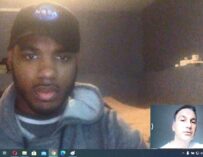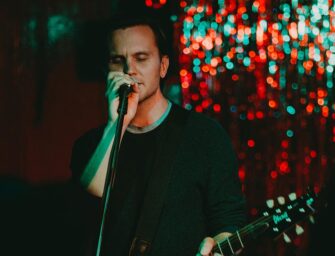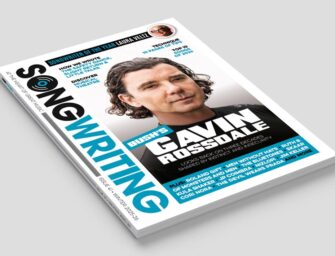
Someone: “If you imagine your track taking place on a space station, you are going to make different choices than if it’s set in the Arctic.” Photo: Bibian Bingen
Want to add a more expansive and atmospheric sheen to your songs? Tessa Rose Jackson is here to help you…
The music of Someone, Dutch/British composer, producer, and visual artist Tessa Rose Jackson, has always been inspired by the cinematic. On Shapeshifter, her debut album from 2021, those influences added a subtle sheen to her psych-pop sound, augmenting the intimate songs that were written during lockdown. Now though, as heard on her new album Owls, her music is bursting with colour, atmosphere and dynamics. With the seed for the album sewn during a road trip she took in 2018 from New Orleans to Nashville and back, and each song plays out like its own vignette.
Having written and recorded an album that conjures up such a cinematic feeling, we asked Someone to share some of her secrets with us…
1. WRITE TO A SCENE
I often write to a film scene which I pull up on my computer and just loop endlessly. For some reason, it allows me to get out of my own head and react to subtle emotions – imagery that I’m seeing in the story. And you might think that means the song will end up feeling less about “you”, but I can very much confirm that, in fact, the opposite can be the case.
Sometimes, I find myself mumbling words and phrases that make me go: ‘Ooh. Did I say that? That’s really personal.’ Something about taking a small step back, giving yourself a little bit of breathing room… really can work some magic.
2. PRODUCE TO A SCENE
This may sound like the same tip, but it’s very much focussed on the space you can allow your music to have when producing to a film scene. Sometimes, being a pop musician at heart, I find myself cramming a million ideas into a track. And then I play it to a film scene and I realise,‘ My goodness. This is so full. There’s no space for the story.’ Imagery really unlocks sounds and production choices for me, it can be such a good exercise to allow sounds to evolve slowly and build your track’s sound world with a little more care and space in mind.

Someone: “The whole point of producing is that it should feel like a playground.” Photo: Bibian Bingen
3. CHOOSE A SETTING FOR YOUR TRACK, REALLY VISUALISE IT
If you imagine your track taking place on a space station, you are going to make different choices than if it’s set in the Arctic. I love imagining the context and the physical location of my music and letting that guide me into which instrumentation I use and how I make them sound. Making a cello play high-up, shake and glide can give it an icy sound, which is a great effect if the story describes the cold or a lake that’s frozen over. It’s little choices and nuggets like this that can really fuse a track together and conjure imagery in the listener’s mind’s eye!
4. PLAY WITH HOMAGES
Sometimes it can be really inspiring to pick a soundtrack you love and create your own homage to it within your music. Like the intro to Twin Peaks, with that gorgeous baritone guitar that instantly transports you into Lynch territory. I wanted the bridge in my track All Time Low to be a nod to that iconic waterfall, so I borrowed my friend’s baritone (which I’d never used before) and mimicked the way the guitar sounded in the Twin Peaks track, processing-wise.
So set yourself a little challenge, pick a score or soundtrack that is iconic to you, and try and figure out how that sound is put together and how you can reference it. Not only is this super inspiring but it’s a really good production and ear-training exercise.
5. WORK WHEN YOU’RE REALLY TIRED
This is a really strange one. Sometimes I come up with the purest, most gut-led decisions, production and composition-wise, when I’m (still) really sleepy. I like working at night and I sometimes find myself still producing while having trouble keeping my eyes open! It’s weird – and possibly not super healthy, so do be mindful of yourself – because I lose track of why I’m making certain decisions. I just instinctively do them. Building a sound world purely on what my ears want to hear and want to melt into, with no other input from the outside world. Definitely, this is something that won’t work for everyone, but it’s been a really interesting one for me.

Someone: “The whole point of producing is that it should feel like a playground.” Photo: Bibian Bingen
6. ALLOW YOURSELF TO GO OFF ON A WEIRD TANGENT
The best ideas can come out of a random brain spike that might initially make you go, ‘Nah, that’s dumb,’ or ‘Nah, that’s too punk/weird/cute/far-out/ whatever for me.’ But the whole point of producing is that it should feel like a playground. Everything should be fair game and some real magic can be made when you allow yourself to explore and get totally lost. If you have a wild idea – follow it through. There might be a bucket of gold at the end of the rainbow. Worst-case scenario, you start again. Or you might surprise yourself, and that’s the best.
7. RESEARCH AND STUDY
Production is something that requires tools. You have tools already, instinctively, but I find that the more I learn about production, about different styles of it, the more inspired and more interesting my output is. And the more enriched I feel as a musician!
I love watching videos of producers explaining how a song came together, what kind of left-of-centre things they did to create a certain sound. Especially those that don’t work in my genre – it’s so important to step out of your bubble and allow yourself to be fed by musicians who make music from a totally different starting point. The podcast Song Exploder is a really good one for this, for example. It fuels you with all these ideas from all these different artists and, I guarantee you, you will find yourself translating some of these techniques into your own work, totally organically. Like I said, it’s all about the fun.



































Related Articles